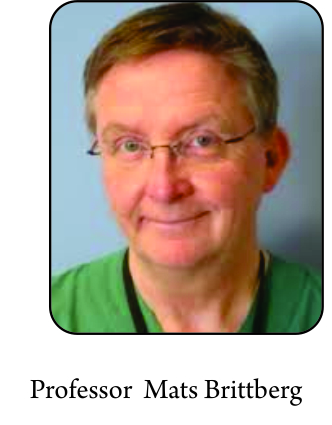Professor Mats Brittberg
Volume 4 | Issue 1 | Jan – April 2019 | Page 23- 26
Author: Professor Mats Brittberg[1]
[1] Cartilage Research Unit, University of Gothenburg, Region Halland Orthopaedics, Kungsbacka Hospital, S-434 80 Kungsbacka Sweden.
Address of Correspondence
Professor- Mats Brittberg
Cartilage Research Unit, University of Gothenburg, Region Halland Orthopaedics, Kungsbacka Hospital, S-434 80 Kungsbacka Sweden.
Email: Mats.brittberg@telia.com
Abstract
Autologous chondrocyte implantation (ACI) has been used clinically since 1987. Most reports on ACI are on the first and second generation ACI with cells in suspension under a sutured membrane and performed with open surgery. Today’s 3rd and 4th generation ACI with cells seeded and grown in or on scaffolds prior to implantation opens up for transarthroscopic implantations. Transarthroscopic surgery reduces the morbidity for the patients and also fastens up the rehab process. In this paper, techniques used for scaffold-based ACI are presented.
References
1.Brittberg M, Lindahl A, Nilsson A et al.Treatment of deep cartilage defects in the knee with autologous chondrocyte transplantation. New England Journal of Medicine 1994; 331:889-895.
2.Brittberg M.Cartilage repair. On cartilaginous tissue engineering with the emphasis on chondrocyte transplantation. Thesis. University of Gothenburg.1996.
3.Brittberg M. Cell carriers as the next generation of cell therapy for cartilage repair: a review of the matrix-induced autologous chondrocyte implantation procedure.Am J Sports Med. 2010; Jun;38(6):1259-71.
4.Steinwachs M. New technique for cell-seeded collagen-matrix-supported autologous chondrocyte transplantation. Arthroscopy. 2009; Feb;25(2):208-11.
5.Hendriks JA, Moroni L, Riesle et al. The effect of scaffold-cell entrapment capacity and physico-chemical properties on cartilage regeneration. Biomaterials. 2013 Jun;34(17):4259-65
6.de Windt TS, Vonk LA, Slaper-Cortenbach ICM, Nizak R, van Rijen MHP, Saris DBF. Allogeneic MSCs and Recycled Autologous Chondrons Mixed in a One-Stage Cartilage Cell Transplantion: A First-in-Man Trial in 35 PatientsStem Cells. 2017 Aug;35(8):1984-1993
7.Brittberg M. Cartilage fragment implantation. . In Cartilage Surgery. An operative manual. Eds Brittberg M, Gersoff W. Elsevier Saunders Philadelphia,2011; 181-191.
8.Brittberg M, Concaro S. Transarthroscopic implantation of Hyalograft (Hyaff 11) with autologous chondrocytes. In Cartilage Surgery. An operative manual. Eds Brittberg M, Gersoff W. Elsevier Saunders Philadelphia,2011; 147-160.
9. Nehrer S, Dorotka R, Domayer S et al. Treatment of full-thickness chondral defects with hyalograft C in the knee: a prospective clinical case series with 2 to 7 years’ follow-up. Am J Sports Med. 2009; Nov;37 Suppl 1:81S-87S
10.Vascellari A, Rebuzzi E, Schiavetti et al. Implantation of matrix-induced autologous chondrocyte (MACI(®)) grafts using carbon dioxide insufflation arthroscopy. Knee Surg Sports Traumatol Arthrosc. 2014 Jan;22(1):219-25.
11.Marcacci M, Berruto M, Brocchetta D et al. Articular cartilage engineering with Hyalograft C: 3-year clinical results. Clin Orthop Relat Res.2005; Jun;(435):96-105
12.Della Villa S, Kon E, Filardo G et al. Does intensive rehabilitation permit early return to sport without compromising the clinical outcome after arthroscopic autologous chondrocyte implantation in highly competitive athletes? Am J Sports Med. 2010; Jan;38(1):68-77.
| How to Cite this article: Brittberg M. Scaffold based autologous chondrocyte implantation: The surgical technique. Asian Journal Arthroscopy. Jan-April 2019;4(1):23-26 . |



